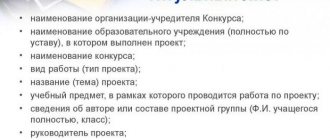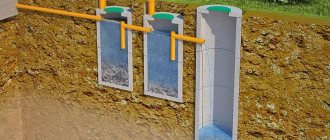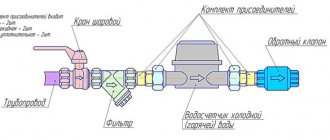The long-awaited spring has arrived. This means there is a lot of work ahead to improve the garden. The most important stage of this work is pruning everyone’s favorite roses. In order for a beautiful plant to delight all summer with its beauty, fragrance and elegant appearance, it is necessary to carry out spring pruning of roses according to all the rules.
Should roses be pruned in the fall?
Pruning is an annual procedure that must be carried out before winter for any variety of roses. A timely haircut allows you to:
- strengthen the root system of the bush;
- improve rose metabolism;
- rejuvenate the plant;
- prevent the development of fungal diseases;
- ensure safe wintering in any region.
It is best to prune roses in both fall and spring. Pruning at the end of the season stimulates the bushes to bloom lushly and abundantly next year. Pruning at the beginning of the growing season is carried out for sanitary purposes and to give the plants an attractive appearance.
Do not disinfect instruments and sections
When pruning plants, the blades of garden tools are constantly in contact with different plants. And if suddenly there is a diseased plant in the garden, but the symptoms of the disease have not yet appeared, then using untreated pruning shears is likely to transfer pathogenic bacteria and fungi to healthy roses. Disinfect cutting equipment with a solution of copper sulfate, alcohol, or burn the blades over a burner fire.
Pruning roses in spring: 4 common mistakes that can harm the plant
Also, sections should not be left unprocessed. Without disinfection, a fresh cut may become infected, which will lead to disease and death of the bush. The sections are treated immediately after the procedure with garden varnish.
When growing roses, you need to carry out all care activities correctly. It is possible to grow magnificent flowers in the garden, provided you do not make the mistakes described in the article.
When to prune roses in the fall
To ensure that pruning roses in the fall for beginners for the winter does not cause harm to the bushes, but only strengthens their health, the procedure must be carried out at the correct time. First of all, it is necessary to take into account the climatic characteristics of different regions. In particular, pruning before winter for rose bushes is performed:
- in November in the Caucasus and Krasnodar Territory;
- from mid to late October in the middle zone;
- at the end of September and early October in the Urals and Siberia, as well as in the northwestern regions.
You should not trim your hair too early, as the procedure may stimulate the growth of new shoots. Because of this, the rose will not have time to prepare for winter and will suffer greatly from the first frosts. At the same time, the bushes are also not pruned at a later date. If you remove plant shoots at subzero temperatures, the damage will take a long time to heal, and the roses will never be able to fully recover.
For pruning before winter, choose a dry day with moderate sun and no strong wind.
It is best to prune a few days before covering the bush for the winter. The air temperature should be low, but positive.
What needs to be removed during the pruning process
Pruning mock orange - rejuvenating, shaping
For pruning to be beneficial, you need to know how to prune a bush rose correctly. The cut should be oblique, located 0.5 cm above the kidney.
If you want to grow a spreading bush, you should prune above the bud that is directed to the outside. A new branch will appear from it, which will not grow into the center of the bush. But if you cut the shoot above the bud, which is directed inside the bush, then it will form upright, but in this case flowering may deteriorate. It all depends on the wishes of the gardener himself.
Proper pruning of roses
The age of the plant is also taken into account. If it is a young annual, then the branches are shortened by half. In the future, they are trimmed smaller.
During pruning, old shoots are removed, as well as branches that have weakened or dried out. Pay attention to weeds, they interfere with the normal growth of the rose. Most gardeners do not leave shoots that grow towards the center of the bush.
Preparing roses for pruning
Pruning itself is a preparatory procedure that helps provide plants with a quality winter. There is no need to carry out any complex activities for roses before it is carried out. It is recommended to pay attention to only a few nuances:
- Feeding. It is necessary to apply fertilizer for the crop for the last time this year before cutting. Fertilizing is carried out no later than September, so that the bushes have time to fully absorb nutrients. Nitrogenous preparations that promote the development of green mass are not used.
- Cleaning the area. Before pruning, it is recommended to weed the rose bed to remove weeds and remove dry leaves and remnants of shoots from the ground. After cutting, you will need to once again collect new plant debris, remove it from the site and burn it along with the old one.
Also, before pruning for the winter, it is necessary to completely tear off the remaining buds and leaves on the rose. During the procedure, the shrub should consist only of bare shoots.
How to treat a rose before covering it for the winter?
Someone treats with iron sulfate. There is an opinion that copper-based preparations are more effective against fungal infections: copper sulfate, Bordeaux mixture, Khom and Oxychom. You can use a number of other drugs, any fungicides, for example: Horus, Raek, Ridomild Gold, Ordan, Abiga Peak, Kuprolux.
For the purpose of prevention, you need to spray in advance, on healthy leaves 2-4 times per season.
For roses, iron or copper sulfate?
If you constantly spray your roses, it is probably better to use iron sulfate, because copper can accumulate in the soil. At the same time, the development of your roses is supposedly inhibited. If you treat with fungicidal preparations before covering, then even covering roses with leaves with traces of black spot you will not have the spread of these diseases.
The rose is still blooming on November 2, Ryazan.
Trimming tools
Winter pruning must be done using clean and sharp tools. In particular, you will need to take:
- garden knife;
- hand saw;
- pruner;
- big scissors.
Before carrying out work, tools must be scalded with boiling water and treated with an alcohol solution. This will eliminate any pathogenic microorganisms on the blades.
Advice! In addition to tools, for winter haircuts you need to prepare crushed charcoal or a solution of potassium permanganate to disinfect the cuts.
What to prepare in advance?
To speed up work and increase productivity, you need to prepare. Suitable tools and clothing will make the job easier.
Thick, durable gloves, thick garden trousers, and a long-sleeved jacket will provide good protection for your hands and feet from thorns.
When pruning roses, you must wear protective equipment and use special gardening tools.
A sharp pruner or scissors is suitable for this work.
Important! Transferring an infection from one branch to another is a common problem. Experienced gardeners recommend disinfecting tools with a solution of potassium permanganate or phytosporin. You just need to periodically dip the pruning shears in the liquid and continue working.
The cut areas are usually treated with garden pitch, coal or putty. This way the plant will not be afraid of fungus, insects and pests.
Types of pruning
Pruning before winter can be divided into three categories:
- Sanitary. During the procedure, weak and diseased shoots, as well as shoots that thicken the plant, are removed from the rose bush.
After sanitary pruning, no more than seven strong and developed stems should remain - Rejuvenating. For overgrown rose bushes, before winter, you can cut off all branches older than three years at the root. The remaining shoots are shortened as much as possible, leaving no more than 2-3 buds.
Anti-aging pruning for winter stimulates roses to bloom more abundantly on new shoots - Pre-landing. Winter pruning is necessary for young seedlings. The shoots are shortened to three buds, and the roots are also trimmed by 3-5 cm - this stimulates the growth of lateral feeding shoots.
After autumn pruning, pink seedlings take root in the ground faster
Formative pruning, which allows you to give beautiful outlines to the crown, is carried out for roses in the spring.
Moisture-recharging irrigation
Do roses need to be watered in the fall? If autumn is rainy, then the bushes will have enough rainwater. On the contrary, during autumn showers you will have to drain excess water from the roots, because the abundance of water will give the roots a stimulus for development, but this is not required before winter.
If there is no rain in autumn, check the soil moisture under the bushes. If the soil is dry, then roses for the winter in the Moscow region can be watered at the very end of September or in the first ten days of October. In colder regions, at the end of September.
Water-recharging watering is important only in dry autumn in order to charge the roses with strength for the upcoming winter.
Important! In order not to cause diseases of roses, they cannot be watered under cover in winter, so do not be late with watering during drought.
How to prune roses correctly in autumn
Regardless of the type of plant and the chosen cutting method, it is necessary to prune roses in the fall before covering according to a proven algorithm. The diagram looks like this:
- First, all remaining buds and flowering stems are removed from the decorative bush.
- Young immature branches, which can be identified by their red tint, are removed with sharp pruning shears.
- Damaged, broken shoots damaged by pests and fungi are cut off from the rose. If they die back partially, you can simply trim them back to a healthy white core.
- Remove thin and weakened branches, as well as strong stems that make the bush too thick and do not allow it to develop freely.
- Old and dense shoots that are not involved in flowering, more than four years old, are also eliminated.
- The sections are treated with garden pitch, a special sealant from the store, or crushed coal. This must be done immediately so that infection does not have time to penetrate into fresh lesions.
When cutting for the winter, cuts should be made as even and smooth as possible, at an angle of 45 degrees. In this case, the damage heals faster and rarely begins to rot.
Immediately after pruning, you can treat the roses in the fall before covering them for the winter. To avoid fungal diseases, plantings are sprayed prophylactically with preparations with a high copper content, for example, Bordeaux mixture. All plant debris is collected from the ground around the bushes and burned in the far corner of the garden before winter arrives.
When pruning roses, you need to retreat about 5 mm from the last bud to the cut.
Climbing
For climbing varieties, winter pruning is carried out no earlier than the second year of life. The algorithm looks like this:
- All shoots with damage or symptoms of disease are eliminated from the bush.
- Healthy branches are cut by 1/3 if the plant is large-flowered, and the tops are pinched for small-flowered varieties.
- Faded shoots are shortened by three buds, and the oldest ones are shortened to 30 cm.
When pruning climbing roses, you need to consider which group they belong to. Ramblers are trimmed very carefully, removing all shoots that have not yet matured and branches with buds. In varieties with a single flowering, up to ten well-developed stems and up to five young, one-year and two-year-old stems are left.
For climbers, simple pruning for the winter is carried out to 1/4 of the length of the shoots. The oldest branches are removed from the bush entirely so that they do not interfere with the development of young stems.
It is better to prune roses from the group of ramblers with repeated flowering not in autumn, but in spring
Hybrid tea
For hybrid tea roses, sanitary and light formative pruning is carried out in the fall. Namely:
- Remove all diseased and weakened shoots.
- Strong branches are shortened by half, and thin branches by 1/3.
- Eliminate shoots growing deep into the bush.
The crown of a hybrid tea rose is given a spherical shape. In this case, it will not have to be trimmed much in the spring, and the plant will be able to immediately begin active development.
It is not recommended to cut hybrid tea roses too short, as radical pruning weakens them.
Floribunda
Autumn pruning for Floribunda must be done annually. Without this procedure, the plant will develop worse and bloom weaker in the next season. Trim is carried out after the bush has completely gone into a dormant state.
The pruning scheme for Floribunda looks like this:
- The wilted inflorescences of the bush are completely removed.
- Strong strong shoots are cut by 1/2 to 3-5 buds, and young shoots are shortened by a third, leaving up to ten growth points.
- Old branches in the center of the bush are completely removed to rejuvenate the crop.
With proper pruning of Floribunda, the rose begins to bloom earlier and more abundantly in the spring. At the same time, by removing old shoots, the growth of new basal stems is stimulated.
Attention! A rose from the Floribunda group should not be pruned too much - it will be difficult for a powerful shrub to recover.
With a large number of old branches, Floribunda blooms worse because it does not produce enough young stems
Bush
For bush roses in the fall, it is recommended to carry out light pruning, mainly aimed at removing weak branches and forming a beautiful silhouette. During the procedure you must:
- Leave intact several of the healthiest and symmetrically growing shoots with 6-8 buds.
- Shorten all other branches by 1/4.
- Completely cut out dry and too thin watery stems.
During autumn pruning, bush rose shoots damaged by diseases and pests are also removed.
Autumn pruning strengthens the immunity of rose bushes and reduces the likelihood of developing diseases in the spring.
Ground cover
Autumn pruning of ground cover varieties consists mainly of sanitary thinning of plants. In particular, it is required:
- Completely cut out damaged and disease-affected shoots.
- Remove crooked side branches.
- Eliminate intertwined shoots in the center of the bush, which impede the access of oxygen.
The strong stems of the ground cover rose are shortened by about a quarter, and the lateral faded branches are cut off by 2-3 buds.
Ground cover roses do not need to be pruned every fall - formative pruning is done as needed
Park
Park roses require moderate pruning before the onset of winter. Necessary:
- Remove damaged and diseased shoots from bushes.
- Trim old branches to the ground that take away excess resources from the plant.
- Shorten strong annual shoots by 5-10 cm.
Pruning in the fall, done on time, stimulates the formation of new flower buds and makes wintering easier. The bushes awaken faster after cold weather and bloom more abundantly.
Advice! Park roses are characterized by increased thorniness, so pruning should be carried out with thick gloves.
When growing park roses, it is not recommended to allow the formation of thick woody stems in the center of the bush
Miniature roses
Pruning miniature varieties before winter comes down to sanitary thinning. The diagram looks like this:
- Damaged and dried stems on the bushes are completely cut off.
- Withered flowers are picked off the shoots.
- Pinch out the buds that have not yet opened.
Healthy shoots of an ornamental crop need to be shortened to 10-15 cm. If the plant barely rises above the ground even without pruning, formative pruning before winter can be omitted.
Old shoots of miniature roses are removed as needed every 2-3 years.
Polyantha roses
Formative pruning for polyanthus varieties is recommended to be carried out not in autumn, but in spring. In this case, before winter it is allowed:
- Remove diseased and broken shoots.
- Eliminate branches growing into the center of the bush.
- Get rid of too thin and crooked shoots that spoil the shape of the plant.
If the polyanthus rose has grown too much, it can be trimmed to the height of the winter shelter.
In polyanthus roses, you need to remove the strongest branches from time to time so that all shoots are of the same thickness
Formation of a rose bush in the first year of planting
Many people wonder how to form a good rose bush in the first year after planting. For normal formation of the bush, shoots are pinched. This work begins when the 4th leaf appears. If buds appear, they are removed. This promotes the development of new branches. Over the summer, a beautiful bush will form.
Advice! If you want to admire the flowers in the first year, then you can stop removing the buds in August and let the rose bloom. Flowering will appear in the same month.
Step by step guide
The pruning algorithm is the same, regardless of the variety. How to cut roses? Even a novice gardener can cope with this task. Below is a description of the steps:
- First you need to pay attention to the tools. They must be clean and sharp. To disinfect them, treatment is carried out with copper sulfate or manganese solution.
- The bush is examined, weeds, debris, and fallen leaves are removed from the ground. If there is foliage on the plant, it must also be removed. If the leaves lie under cover, moisture will evaporate, and then rotting will begin, which will provoke a disease of the bush.
- Trimming begins. Initially, wild growth that grows at the roots is removed. These are light green branches. It is worth getting rid of shoots that grow incorrectly, interfere with the formation of a beautiful bush, or have damage or diseases. Weak branches are removed. You also need to remove shoots without buds to the very base.
- After such work, the sections need to be processed using garden varnish, paste, and biobalsam. Otherwise, an infection may occur. All branches that have been cut must be removed and not left near the plant.
- Finally, the bush is sprayed with biological products and covered for the winter. In the spring, re-processing of the cuts will be required.
Rose pruning
It is important to prune roses correctly throughout the year, following a pattern. Autumn pruning is especially important. How the rose will bloom and develop depends on this. Proper care will protect against disease and plant death.
Caring for roses after pruning
After pruning roses to prepare for winter, it is necessary to provide the plants with quality care:
- Treat with antifungal drugs. You can use both systemic fungicides and regular Bordeaux mixture. Roses are sprayed at positive air temperatures; after the onset of frost, treatment is no longer carried out.
- Organize a winter shelter. It is recommended to insulate roses by hilling with sawdust, wood shavings, straw and spruce branches. A frame is built on top for the plants, which is covered with lutrasil or spunbond, as well as coniferous branches. Warming is carried out when the daytime temperature is set at a level of -5 to -7 °C.
When constructing a shelter for climbing climbing roses, it is necessary to place boards or spruce branches on the ground so that the shoots are not directly on the ground.
Attention! Antifungal treatment and winter insulation for ornamental bushes are carried out approximately ten days after pruning.
What to do after?
It is recommended to treat the plant after all of the above procedures. The choice of product depends on the climate. There are two options:
- in cold weather (below +5), iron-containing preparations are used;
- at temperatures above +6 - copper-containing substances.
Important! Iron sulfate at warm temperatures can burn the bushes, and copper preparation at low temperatures will be useless.
After all the procedures, all that remains is to wrap the bushes, which will provide favorable conditions during winter “hibernation”.
Stages of plant preparation
Absolutely all varieties of crops need careful shelter before the onset of cold weather, even if they grow in the middle zone. But before proceeding to such an important stage, it is necessary for the roses to enter a state of rest. Experienced gardeners know many subtleties on which the beauty of future buds depends.
Proper pruning
If a summer resident knows how to properly prune roses for the winter, then the root system of the shrub plant will be able to strengthen properly, and will also create a supply of nutrients that will be useful in the spring. In addition, the rose will rejuvenate and form more beautiful buds.
When the autumn pruning of roses and shelter for the winter have been carried out in compliance with all the rules, then you don’t have to worry about the condition of the bush, even if it is too frosty outside. Each variety of rose has its own rules, but they all have the following advantages:
- Shortened shoots are much easier to cover for the winter.
- The rose will be protected from damage by various bacteria and pests.
- With the arrival of spring, the growth of new shoots on the bushes intensifies.
- On a correctly pruned plant, the correct formation of new flower stalks increases.
- The root system develops more rapidly.
- Trimming unnecessary shoots helps the bushes accumulate nutrients that promote active growth in the spring.
Healthy!
Beginning gardeners should remember that pruning must be carried out within a strictly specified time frame. It is strictly forbidden to touch roses from the beginning of August until the first frost. Otherwise, dormant buds will bloom, and immature young shoots will be seriously damaged in winter.
The pruning pattern can be not only short and long, but also medium. If a gardener received a seedling as a gift, and he could not independently determine the type of rose, then it is best to choose the latter option for pruning the shoots. All immature, old and damaged branches are pruned. There should be no shoots that grow inside the bush. Dried buds and leaves are also removed.
Important!
For work, it is best to use a sharp pruner, lopper or knife. In addition to this, you need to prepare gloves made of thick material, a rake and garden pitch. It is best to work with shrubs in dry and sunny weather. The cuts should be at an angle of 45°.
Balanced feeding
The introduction of nutrients with the arrival of autumn is necessary in order to fully restore the balance of minerals found in the soil, as well as to give roses new strength after abundant flowering and pruning. Moderate application of fertilizers increases the winter hardiness of the bush several times and also strengthens its immunity. A positive result becomes noticeable if fertilizing was done in early September, as well as two weeks before the onset of frost.
When there is a significant cooling outside, the use of nitrogen preparations is strictly prohibited, as they stimulate vegetation. The main task of the gardener is to slightly slow down the growth of the crop. The emphasis should be on strengthening the root system, for which magnesia, phosphorus, and potassium are used. If desired, the gardener can use fertilizer in special granules, which are scattered in small quantities around the bush. But most summer residents prefer the proven option - gradual dissolution of mineral fertilizer in water .
Modern preparations make it possible to replace the traditional application of fertilizers at the roots with spraying of the foliage. For the first option, take ten liters of clean water, two tbsp. spoons of phosphate, half a teaspoon of boric acid, as well as one tbsp. a spoonful of potassium sulfate. You can prepare a high-quality foliar fertilizer from the same components, but in a weaker concentration. As for natural baits, it is better to use wood ash.
Effective pest control
Planned preventive treatment of plants is carried out only after water-recharging watering, pruning and fertilizing. This stage always completes the comprehensive care of roses in the autumn. When every centimeter of roses has been processed, the bushes are hilled and covered.
It is worth noting that it is extremely important to treat plants before the onset of cold weather, since ripe fungal spores fall along with the foliage to the ground, where they can remain until next spring. Even the hardiest varieties can be subject to severe diseases. For spraying, you can use not only time-tested products, but also improved preparations.
Experienced gardeners give their preference to a solution of iron sulfate (3%). To prepare this product, you can only use a plastic, glass or enamel container. As for metal products, in combination with iron sulfate they give an undesirable chemical reaction.
If powdery mildew or black spot has settled on the bush, then for effective control you can safely use the following drugs:
- Fundazol.
- Karatanov EC.
- Tsineb.
- Ridomil gold.
- Benomyl.
All pathogenic microorganisms have a main drawback - they quickly get used to modern chemicals, which is why each time it is necessary to use a new, no less effective product. During autumn treatment, it is advisable not to use biofungicides, since they only act at above-zero temperatures, but are absolutely useless in the cold. To prevent re-infection of the bush, it is necessary to treat not only the plant, but also the soil around it.
Pruning hybrid tea roses
Trim the bushes of these roses into a ball shape. In such crops, buds appear on the shoots of the current year; accordingly, they must be greatly shortened. On young bushes, leave two to four buds at a distance of fifteen centimeters from the soil level, and on adults - four to six buds at a distance of twenty centimeters. Also leave two to four buds on the side shoots.
The inner stems, which promote strong density, are removed from the center of the bush.
Trim hybrid tea roses annually.
Useful advice from experts
All petals and cut branches must be carefully removed from under the bush and burned. If this is not done, then pathogenic microorganisms may appear in the open ground, which will certainly harm the plant itself. After treatment with a protective preparation, the roses should dry out a little. With the arrival of spring, you need to use copper sulfate, which is most effective at above-zero temperatures.
Since, thanks to proper shelter, the ground under the bush does not freeze, mice and even rats can live in the sawdust. For their food, they use the root system of roses, which causes irreparable harm to the plant. You can scare them away with tampons with Vishnevsky ointment or pieces of burnt wool. These items must be placed inside the insulating frame.











